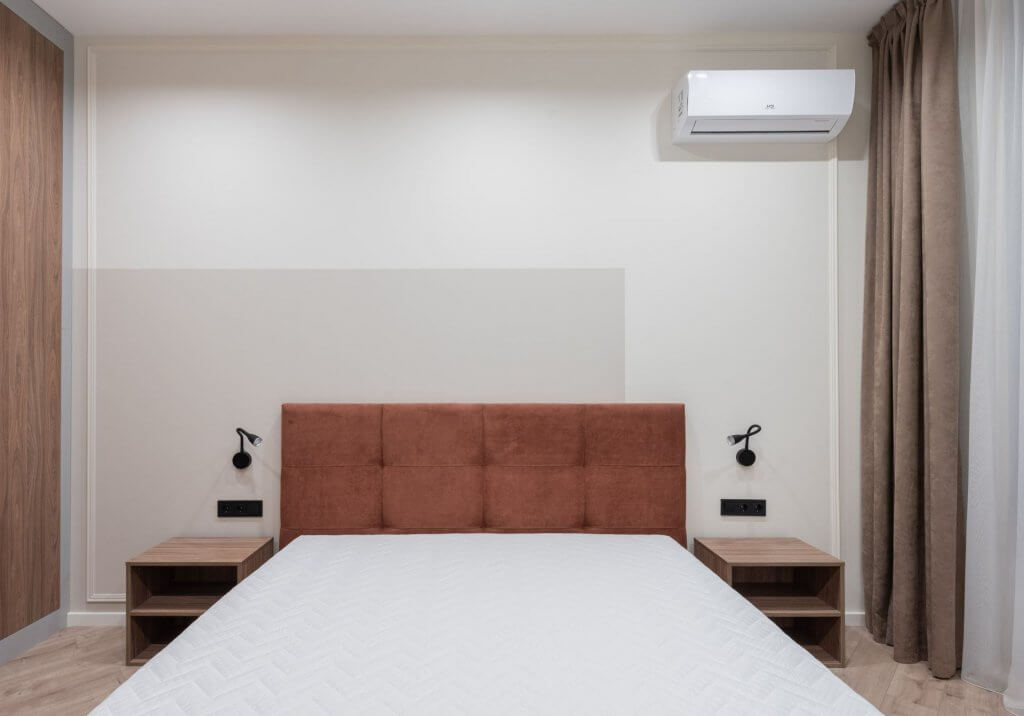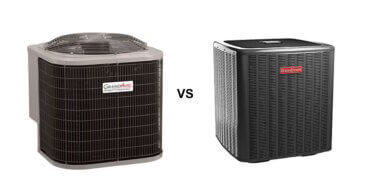An air conditioner (AC) is one of the most important appliances in residential and commercial spaces, especially for people living and working in much warmer climates. Not only does an AC regulate temperature, but it also improves overall air quality.
As air conditioner shipments in the US continue to rise, so do the concerns surrounding energy consumption and environmental impacts. Therefore, more consumers are considering energy-efficient options for AC units and other appliances.
Today’s modern air conditioners come with energy-saving features that reduce our carbon footprint, especially when compared to older models. An air conditioner’s energy efficiency is determined by the Seasonal Energy Efficiency Ratio, which measures how well a unit will work given certain outdoor temperatures.
Some of the most energy-efficient air conditioners today can save anywhere between 20% to 40% of cooling energy costs, and one popular model is the split-type air conditioning system.

Apart from their energy-saving capabilities, split-type units also boast sleeker profiles and quieter motors. These, among other features, make them a popular choice for many consumers.
However, as with any investment decision on an appliance, it is essential to consider the disadvantages of a split-type AC before purchasing one. And here are several factors to consider before deciding on an air conditioning unit.
Advantages Of Split-Type Air Conditioning
Convenience
Split-type air conditioners do not require air ducts like centralized units, nor are they large and cumbersome like traditional ACs. They also have zone split (multi-split) systems, which allow the user to run more than one cassette using the same outside condenser to control the thermostat between two separate rooms. One zone can even be shut down when not in use, making them ideal for offices or hotels.
Split-type air conditioners are also sleek and slim, making them excellent choices for those who are particular with interior design. They are unobtrusive as they are usually placed high up on walls, away from your eye line or reach. These models can be used anywhere, but they work especially well with minimalist and modern designs.
Energy Efficiency
While traditional air conditioners depend on electrical components to directly control the motor and compressor, energy consumption levels remain high due to non-optimized operation. Fortunately, advancements in technology have resulted in more energy-efficient air conditioners on the market.
The split-type AC is one such example as its design relies on printed circuit boards (PCB) to perform complex communication, data calculation, and control output operation. Using software to predict power consumption between circuits, designers are able to overcome modern PCB layout challenges and develop components for energy-efficient air conditioning models. This design allows the AC to regulate its function relative to the required cooling load, catering to the demand for more effective products at lower costs.
Energy-saving appliances like split-type ACs use these new technologies to reduce energy consumption without compromising functionality or efficiency. By investing in this type of air conditioner, your home can reap the benefits of a high-performing appliance with minimal costs.
Versatility and Ease
Perhaps one of the biggest advantages of using a split system is having both cooling and heating functions. To use one or the other, simply switch functions on the outside compressor, which can also work as a heat pump. Whether you’re using these units in a small office, shop space, or conservatory, they are ideal for heating and cooling all sorts of locations as long as they are installed properly.
Lastly, split-type ACs are easy to use. Their various functions are remote-controlled, and basic upkeep is as easy as removing, washing, and reinserting the unit’s filters. When switched on, these air conditioners are also much quieter, allowing you to sleep, study, or work in peace.
Disadvantages Of Split-Type Air Conditioning
Cost
Because split-type ACs operate at a much higher capacity than window air conditioners using much more efficient systems, they are also more expensive. One of the biggest drawbacks of buying a split-type air conditioning system is the upfront cost for the unit and installation, which can range anywhere between $3,150 to $9,000. This is much higher compared to window-type ACs that will average around $350 to $1,150.
However, those who are looking to save in the long run should consider investing in split-types. The lower overall cost of using an energy-efficient system outweighs the hefty upfront cost, making it a better choice for the long term.
Noise Level
While whisper-quiet on the inside, split-type air conditioners have a compressor unit installed outside homes or buildings that generates plenty of noise. This can become a noise hazard for neighbors, especially for anyone residing in quieter locations.
Fortunately, reducing air conditioner noise is possible with sound blankets that can be purchased from manufacturers. Made from a fiberglass material coated with vinyl or aerogel finishes, these blankets are used in various industrial applications, including muffling the sound of an air conditioning unit to keep the noise level to a minimum.
Installation and Maintenance
While window AC installation is essentially a simple DIY project that requires minimal heavy lifting and screwing some parts into place, split systems can only be installed by a professional. This is to prevent any safety issues on your end, and it is the only way to validate the warranty. Waiting for a licensed installer to install a unit can also take some time, depending on their availability.
Once installed, split-type air conditioners may also require quite a bit of upkeep. Homeowners should remember to do a monthly clean, especially its unit channels, to avoid more significant problems later on. Outdoor condensers also need to be cleaned regularly, and standard framework upkeep is necessary for the machine to operate well. It may also be beneficial to hire a professional to do a deep clean at least twice a year.
Choosing the right air conditioner depends on several factors other than price, especially with the options that technology has made possible. Despite having some disadvantages, split-type air conditioners provide more benefits that are worth the extra effort. By using them together with air purifiers and humidifiers to improve air quality, your home can become a cleaner and more comfortable place to live in.





When you said that split-type ACs are more convenient and easy to use, I immediately thought of my mom. She has a hard time operating the central AC at my aunt’s home a while ago. This is why I plan to have a split-type AC installed in her home soon. Great article!